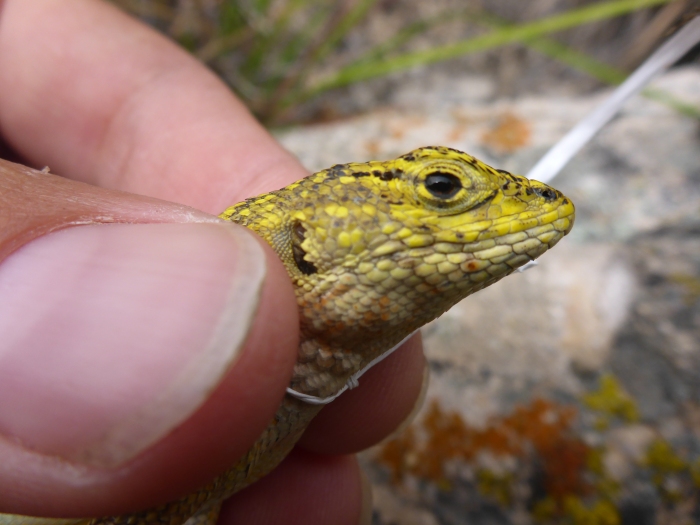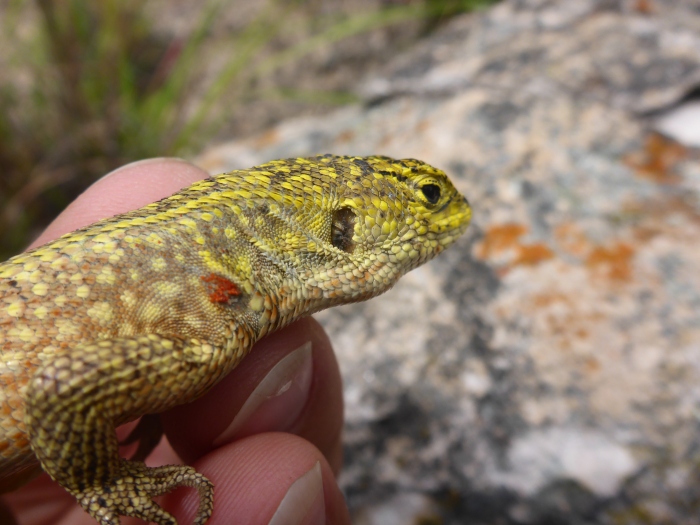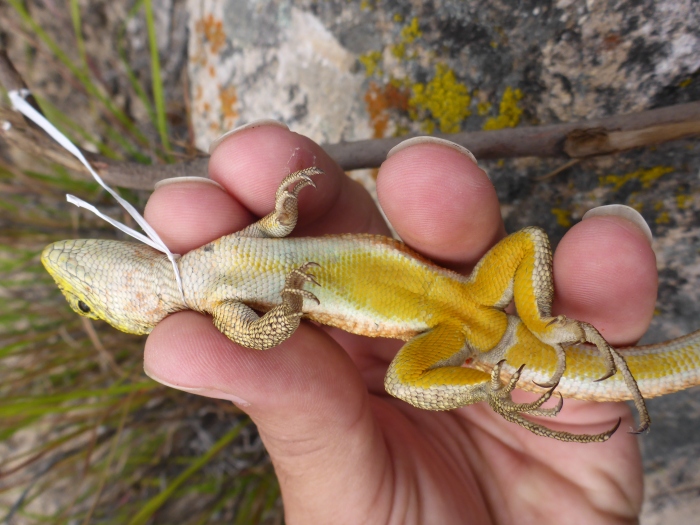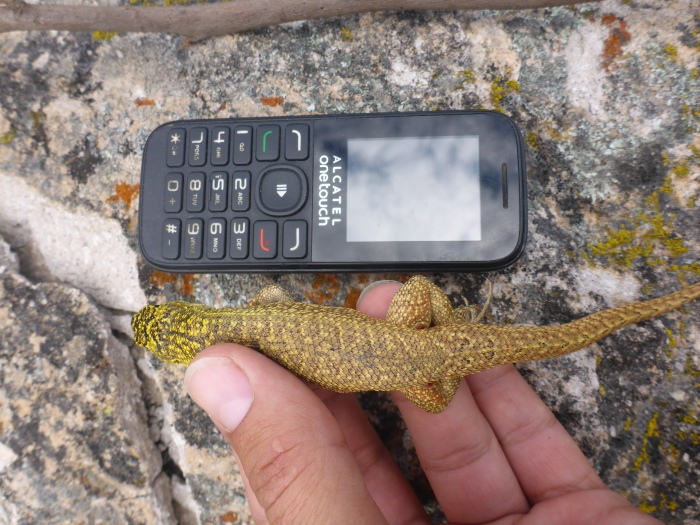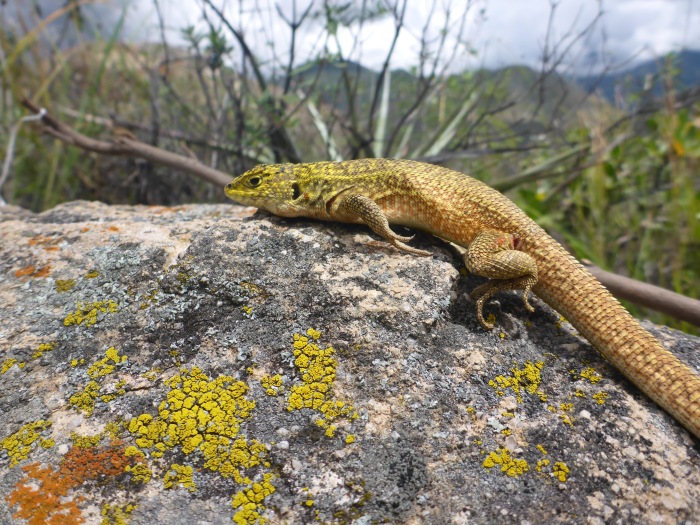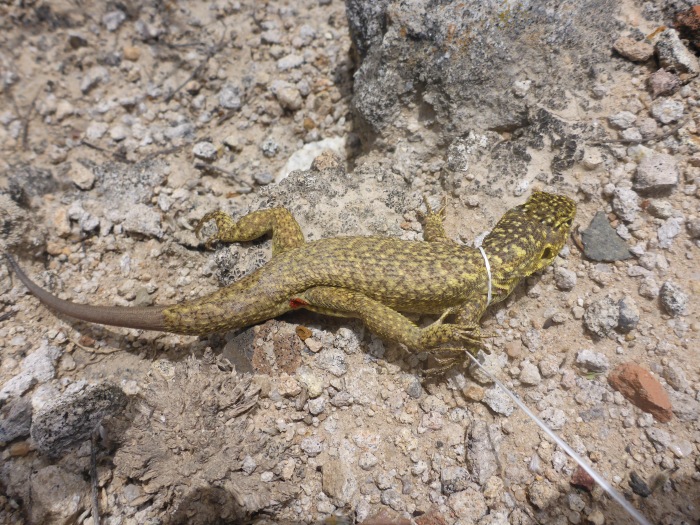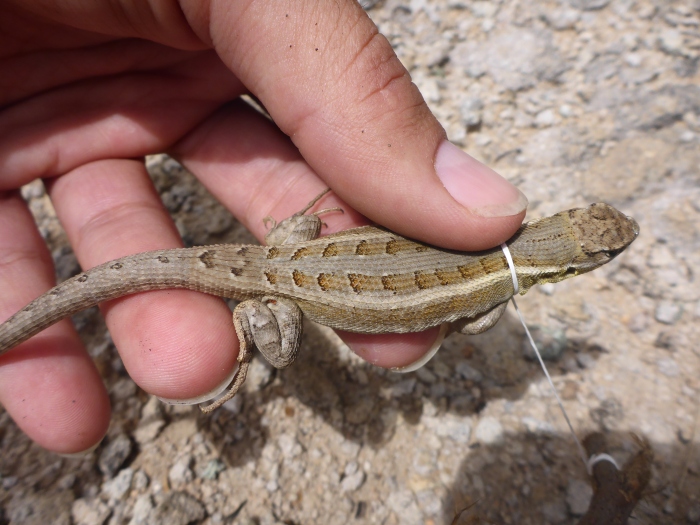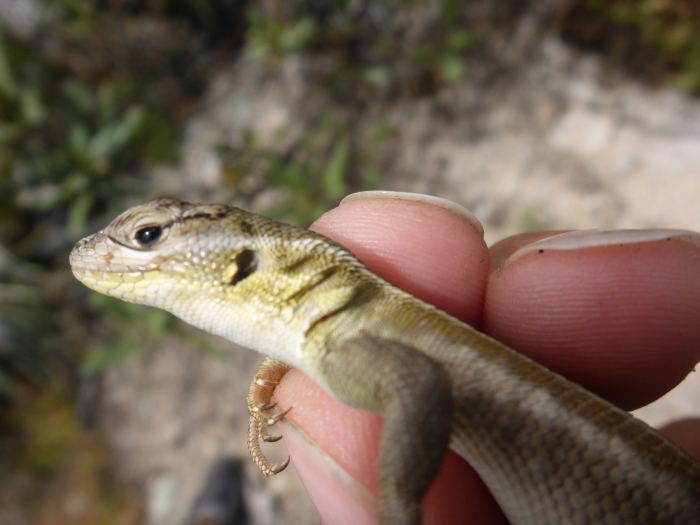For those who know me really well, it is common knowledge that my favorite kinds of animals have always been herps, which is to say reptiles and amphibians (lizards, turtles, snakes, frogs, etc.).
Consequently, while here in Perú I have been on the look for reptiles and amphibians everywhere I go. I will add a post at some point with photos of all of the different reptiles and amphibians I have seen and/or captured while here in Perú, but for the moment enjoy this little tidbit.
Last week, while visiting the tree nursery in the landfill where I sometimes work, I noticed baby toads hopping all over the ground. Seriously, with every other step I took, you could note tiny, brown figures hopping along the ground. I wasn’t too surprised to be surrounded by toads since there is a small riverbed near the landfill that fills with water during the rainy season, but it was an unexpected occurrence. There must have been eggs and tadpoles there for some time, which had finally metamorphosed into toadlets.
Anyways, while walking around the landfill I noticed a small hopping figure that looked a bit, well, different. It stood out, and on closer inspection I realized because its legs were PINK! I quickly scooped it up, examined it more closely, and discovered it had red eyes, which would indicate that the toadlet had some form of albinism. It was an awesome discovery; usually albino animals don’t survive for long in the wild given their atypical colorations. After a brief photo shoot, I put the tiny toad inside the tree nursery with the hope that he would be safe from predators for sometime within its protective mesh. We shall see. Enjoy some pics!
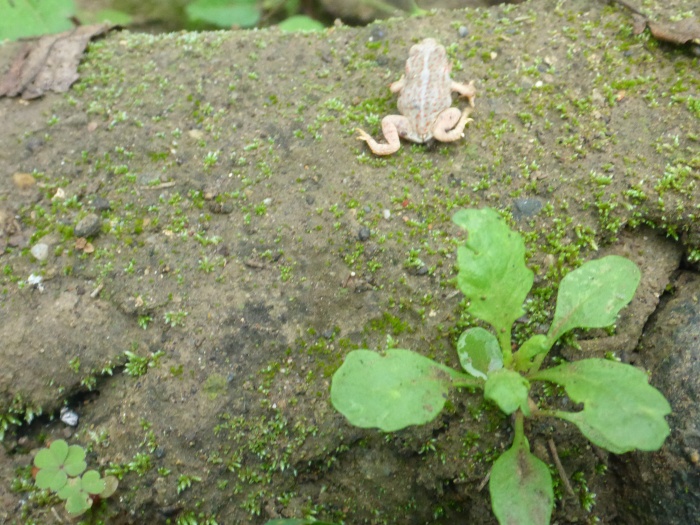
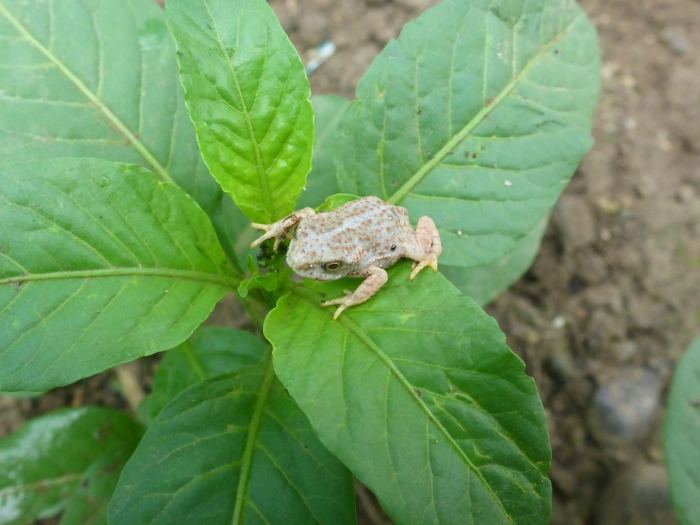
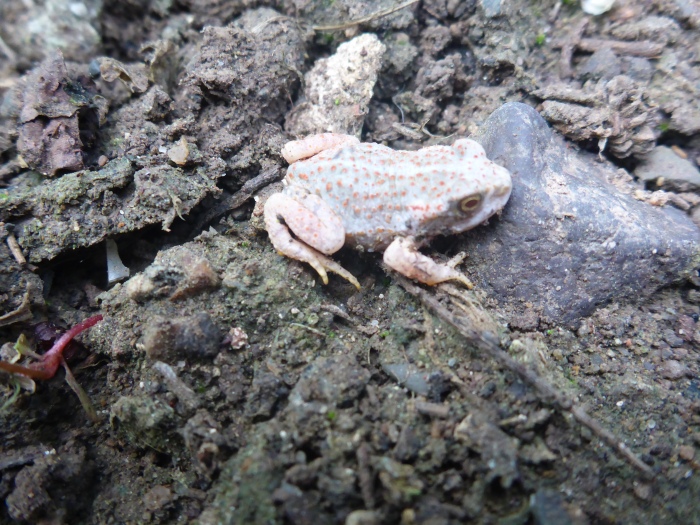
Unfortunately I neglected to take any pictures of a normal looking toadlet for comparison, but rest assured they look anatomically identical but with brown skin and bumps.
Until next time,
MGB
